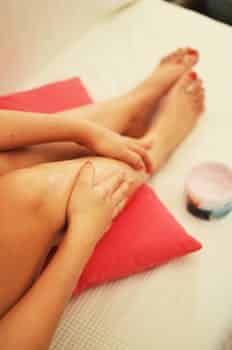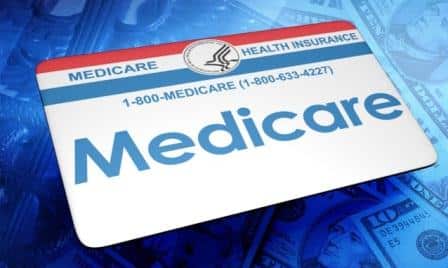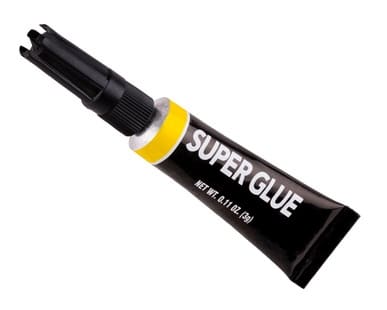
Frustrated with Painful and Unsightly Leg Veins
Painful and unsightly leg veins
With the Arizona heat, a summer day, winter day, or any day is ideal for wearing shorts. But for those with varicose veins or spider veins, the thought of wearing shorts is troubling and leads to severe anxiety. According to the U.S. Department of Health and Human Services, 55% of adult women experience abnormal leg veins as well as 45% of men. If you suffer from varicose veins, you don’t have to resign yourself to living with them if they bother you as there are many ways they can be treated in the office without surgery or painful vein striping.
What are varicose veins? Can varicose veins be prevented? We break it all down for you.
What are varicose veins?
Varicose veins can form when the vein valves that move blood back to the heart weaken and malfunction, resulting in swelling and inflammation. As the valves weaken and no longer keep blood flowing in one direction, the veins become enlarged or stretched due to the abnormal blood flow, blood begins to back up or pool. This often results in bulging, twisted veins with a purple or blue appearance.
Varicose veins most commonly occur in the legs because gravity and other factors make the normal flow of blood returning to the heart more difficult. The lack of circulation and blood pooling means the veins can be painful, make the legs feel heavy or cause a burning, aching, or throbbing sensation.
Why do I have them?
Your genes are the primary factor contributing to your risk for developing varicose veins. When one or both parents have varicose veins, your risk increases. Other contributing factors include pregnancy, obesity, older age, prolonged standing, and physical inactivity.
What do I do about them?
- Physical activity is a great place to start. When we walk, the contraction of the calf muscle helps circulate blood back to our heart, alleviating the build-up that contributes to varicose veins.
- Prescription grade compression socks will also aid with the circulation of blood.
When these aren't enough, new procedures to treat varicose veins are producing excellent results:
- One is the VenaSeal Closure System, which uses medical adhesive and this adhesive is placed in the location along the diseased vein.
- Another is the ClariVein Device, the device uses Mechanico-Chemical Ablation (MOCA). It provokes natural vein spams to produce closure.
- Endovenous ablation is a treatment that uses heat or radiofrequency energy to close off a vein that is not functioning properly, redirecting blood flow through other veins.
- Sclerotherapy uses an injection of a specific chemical to make smaller veins shrink.
Advanced Vein Institute of Arizona
Question & Answer 5 weeks post-EVLT, veins along my inner thigh have turned brown, and one spot is slightly red. Is this normal? Question: It’s my 1st week in Vietnam and I’m here for an additional two-and-a-half weeks. My doctor closed up a vein in my groin area 5 weeks ago. I’ve just noticed on…
Read MoreQuestion: I am 20 years old with a history of undiagnosed autoimmune disease, which is currently in an acute flare. After suffering from a case of phlebitis in greater saphenous vein of the right leg for two months, I was just recently diagnosed with venous insufficiency in both the greater and smaller saphenous veins of…
Read MoreQ & A Pregunta: ¿Qué cubre el seguro, estoy en Medicare con un suplemento. Respuesta: Medicare con un suplemento cubre las visitas a la oficina, los ultrasonidos y las intervenciones necesarias, típicamente al 100%. Por lo general, no hay un gasto de bolsillo asociado con el tratamiento en la oficina.
Read MoreQ & A Question: What do insurance cover, I am on Medicare with a supplement. Answer: Medicare with a supplement covers the office visits, necessary ultrasounds and interventions, typically at 100%. Usually there is not an out of pocket expense associated with in-office treatment.
Read MoreQ & A Pregunta: ¿Cuál es el costo promedio si tiene varices en una pierna y arañas vasculares en la otra? Respuesta: la mayoría del tratamiento de las venas varicosas, si es médicamente necesario, está cubierto por el seguro. Los costes del tratamiento de la vena de la araña varían dependiendo de la cantidad de…
Read MoreQ & A Question: What is the average cost if you have varicose veins in one leg and spider veins in the other? Answer: Most varicose vein treatment, if medically necessary, is covered by insurance. Spider vein treatment costs vary depending on the amount of veins present, if the insurance will cover them (medically necessary) and…
Read MoreVenaSeal El último tratamiento para las varices puede parecer que es directamente de una película de ciencia ficción, pero la sustancia utilizada para cerrar las venas anormales, pegamento del cianocrilato, se ha utilizado en procedimientos médicos y cirugías por décadas. ¡ Créalo o no, el pegamento del cianocrilato se ha utilizado los procedimientos desde 1949,…
Read MoreVenaSeal The latest treatment for varicose veins may seem like it is straight out of a science fiction movie, but the substance used to close off abnormal veins, cyanoacrylate adhesive, has been used in medical procedures and surgeries for decades. Believe it or not, cyanoacrylate adhesive has been used procedures since 1949, and other types…
Read MoreAlgunos buenos consejos generales fueron recientemente compartidos por el Consejo de salud de Estados Unidos sobre varices y arañas vasculares. Hay algunos puntos adicionales que deben ser considerados cuando se discute la salud venosa. Con respecto a lo que hay que recordar; es importante mantener una hidratación adecuada. Al hacerlo, se fomentará un flujo sanguíneo…
Read MoreSome good general advice was recently shared by U.S. News Health Tip regarding varicose and spider veins. There are a few additional points that should be considered when discussing venous health. Regarding do’s and don’ts to remember; it is important to maintain adequate hydration. In doing so, one will encourage healthy adequate blood flow thereby…
Read More






